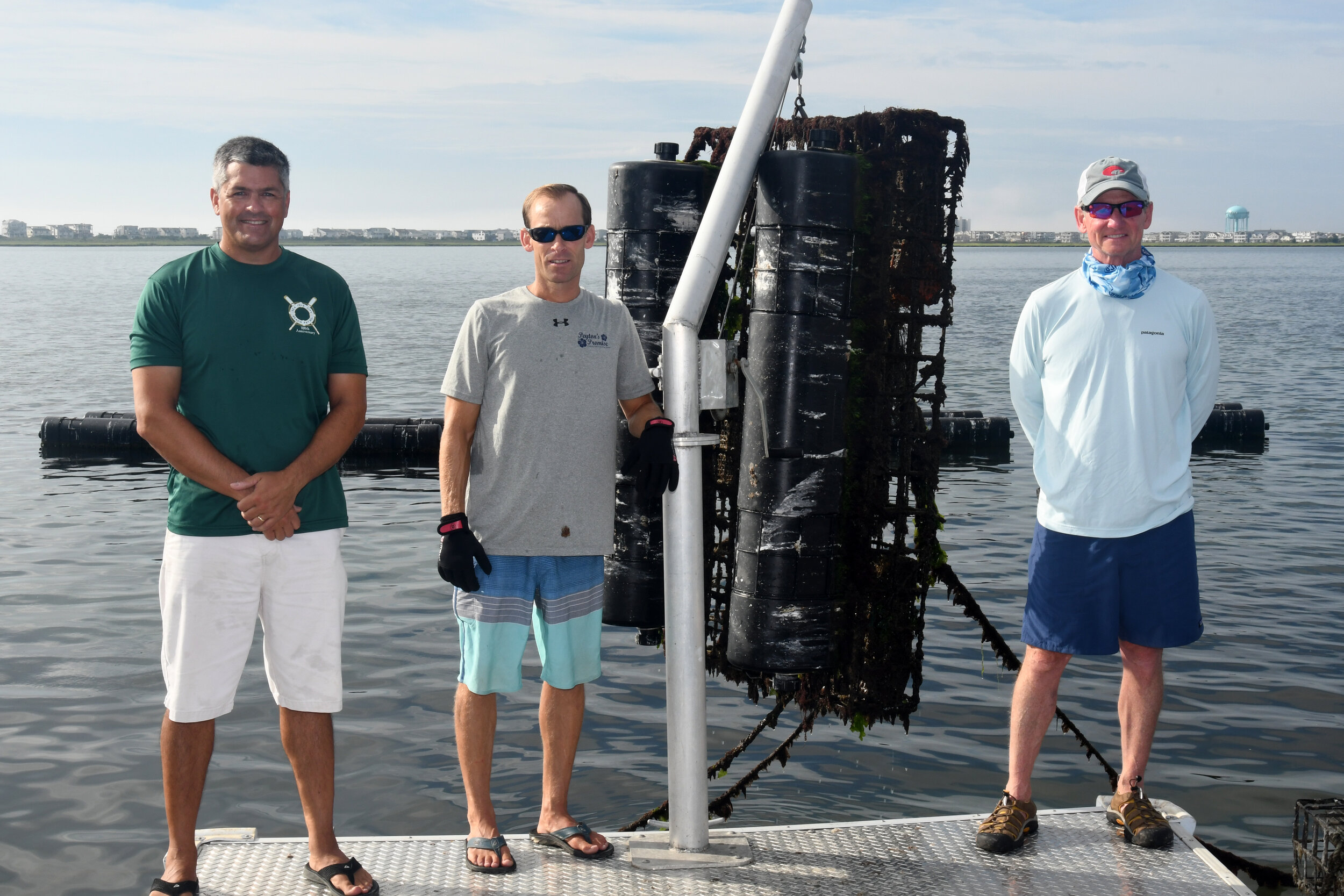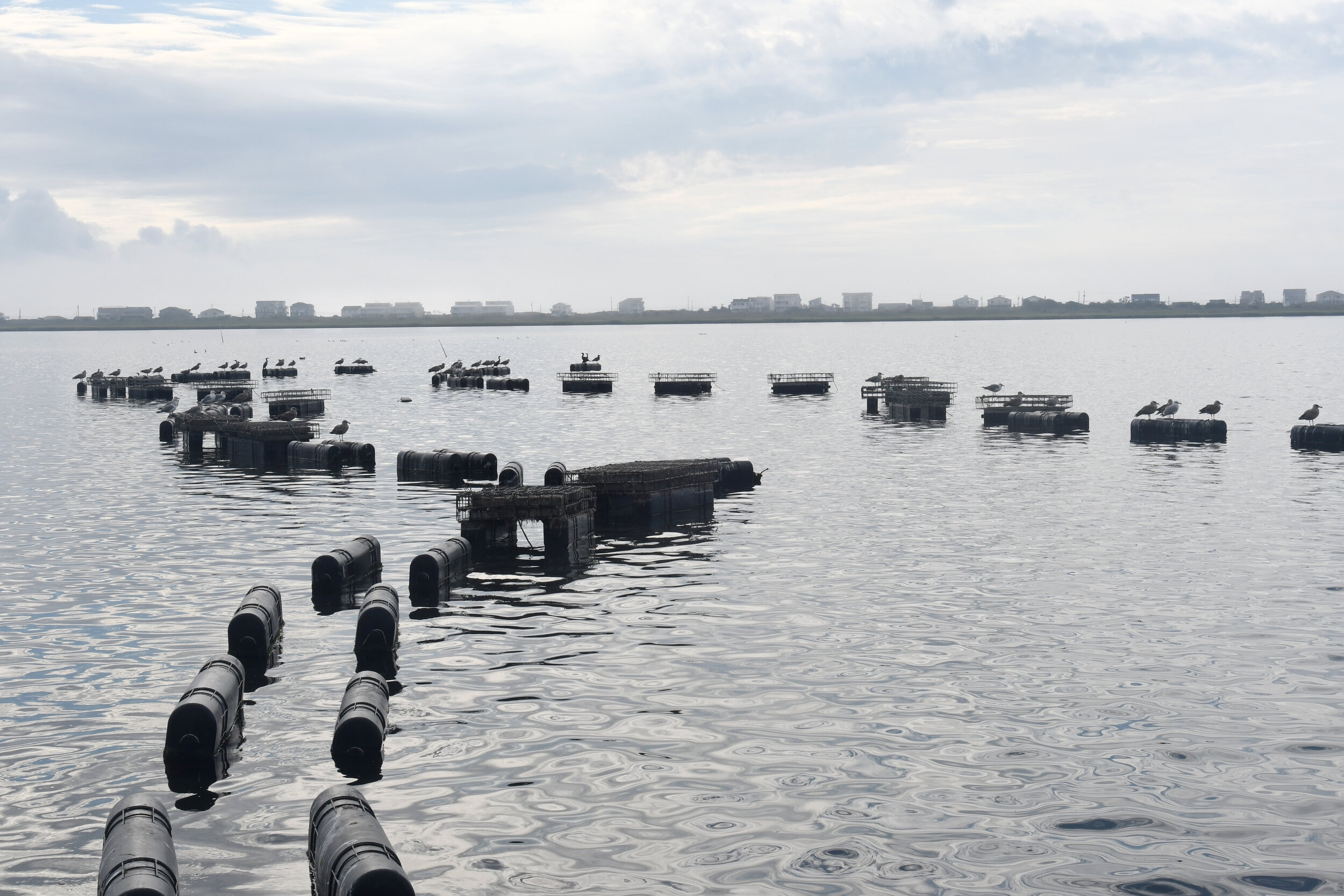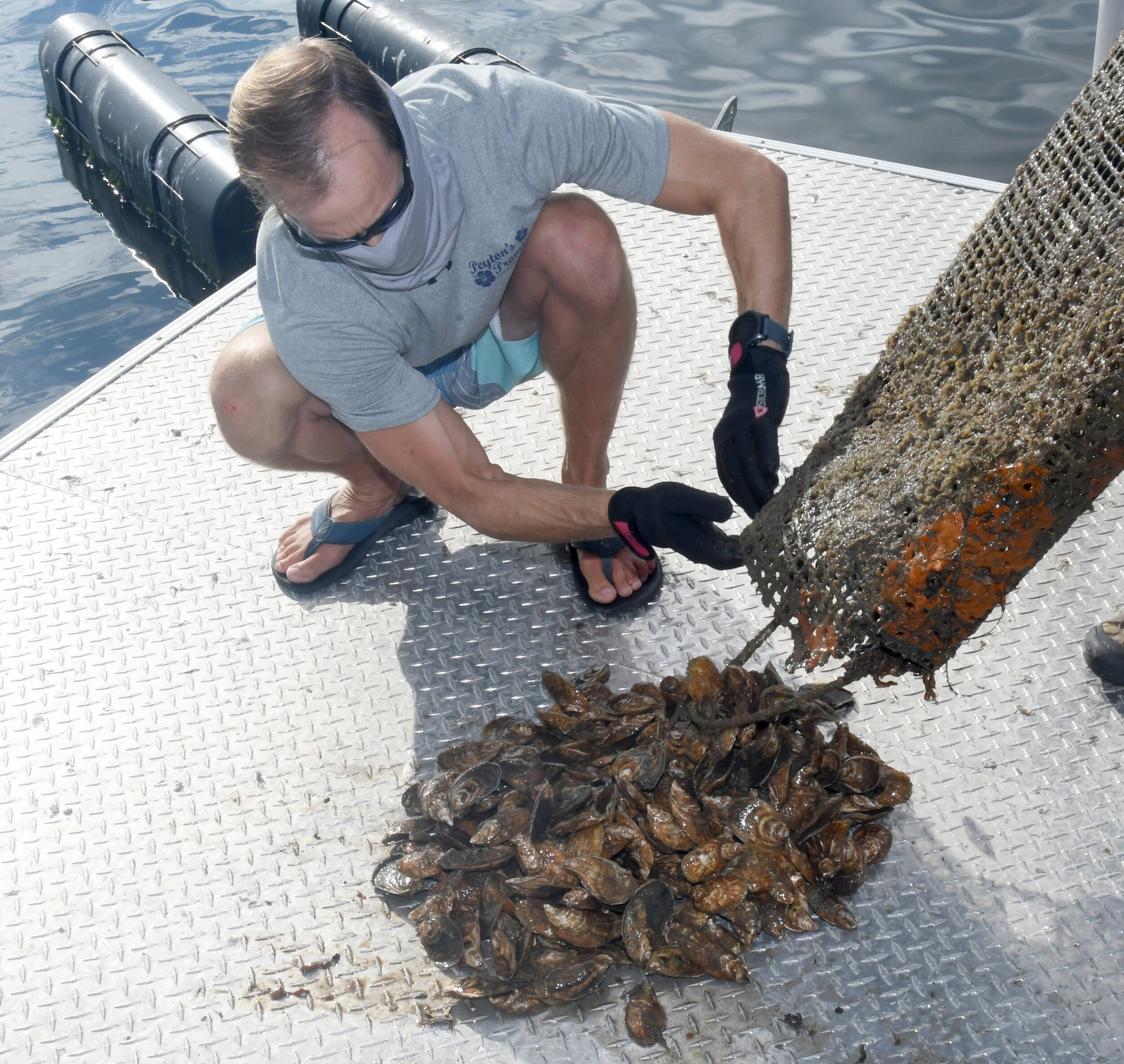The Oyster Is Their World: 3 Pals Launch the Ludlam Bay Oyster Company
Chuck Gehman, Dustin Laricks and John Martin on their work boat at their farm site.
Just one more step.
A business dream for three Sea Isle City friends – Dustin Laricks, Chuck Gehman and John Martin – has reached the brink of reality. There is a strong chance that area restaurants this fall will showcase oysters from their enterprise, the Ludlam Bay Oyster Company. If not, the timetable would be early next year.
All the company needs is one more certification from the State of New Jersey – a license granting it the right to sell the product – and it will be in full operation. For roughly the last three years, the lead-up process has been a labor of love for the three Sea Isle City homeowners. They have operated an oyster farm in Ludlam Bay while awaiting the green light.
The joint effort combines their affection for this area, the water and oysters. They have patiently laid the groundwork for a new business. The group has moved smartly, investing in the business infrastructure only after obtaining the blessing to operate from regulatory agencies.
And now, the debut is almost here.
“I don’t really know how this idea materialized, but I have a degree in marine biology, a passion for wildlife and the environment, and this is not a far stretch from where I grew up,” says Laricks, the owner of Laricks Real Estate who also teams with his wife Debbie to run the Peyton’s Promise charity that has raised more than $500,000 for Children’s Hospital of Philadelphia over the last decade.
The oyster company is the next big venture.
“We are all excited about this and we have a passion for working on the oyster farm,” Laricks says of the partners. “We have the ability now to supply local restaurants, but without the final certification, we would have to use distributors, and we don’t want to do that right now. Local restaurants have contacted us about working with them and we have told them that we will be in touch. We want to work directly with them.”
This is not a farm in the classic sense. There is no north forty. There is no heavy equipment to operate. But the operation requires a meticulous eye.
The farm consists of floating cages that hold the “spat,” a group of baby oysters purchased from a local nursery. There are perhaps 50,000 in that group, coupled with another 50,000 that will grow over the next year. They are in 60 cages, all 6 ft by 6 ft by 4 ft.
One or all of the owners work this farm two or three days a week. They keep oysters separated from one another, essentially allowing them to mature in the water.
Oysters feed off the water, expanding to their full size in perhaps one year. The more separation they have from each other, the better they mature and the more water they can filter. This is a side benefit to the public, as oysters act like a water purification device.
Oysters, clams, and other shellfish are efficient filter feeders that help remove excess nitrogen from waters by incorporating it into their shells and tissue as they grow. For the Ludlam Bay Oyster Company, keeping the oysters in water is crucial.
“Ours are fresh and grown in clean water,” Laricks says. “We grow ours at the top of the water column, we don’t grow them in sand. There is no sand and mud inside of our oysters.”
The Ludlam Bay company began its regulatory ladder climb three years ago. The process required obtaining a lease for water space, permits, and documentation from the state that the water is clean. Organizations involved included the U.S. Army Corps of Engineers, the state Department of Environmental Protection, and the state Department of Agriculture.
Start-up requirements include a boat that goes out to the bay to monitor the farm, the labor of the owners to work it, a refrigeration facility, finances, and an abundance of patience. During the winter, the oysters may be lowered to the bottom of the bay if there is a concern over it freezing.
One by one, the boxes were checked to get this company rolling.
In a normal year, the company will probably harvest and sell 50,000 spat and keep 50,000 to be developed for the following season. That rotation will probably become commonplace over time. This year, simply bringing the business to fruition is the company's goal. The buildup period has been extensive.
Gehman, who has been a teacher for 22 years, also is a lieutenant with the Sea Isle City Beach Patrol. He became the point person for this company, filling out applications and dealing with the agencies.
Dealing with mounds of paperwork and layers of administration is a tedious process. Fortunately for these owners, they could afford to be patient. All have other jobs along with the money to prime the business pump (purchasing oysters, permits, a boat, refrigerating facility, etc.).
“I can’t recall that there was a meeting where this evolved from,” Gehman says of the business. “We’re all friends, we love being out on the bay, and one thing pretty much led to another. And we all love to eat oysters.”
The partners view the startup as a long-term business. For Martin, an orthopedic surgon in Reading, Pa., who will soon retire, this is a logical next life phase. He awaits an era of more time at the farm and the harvesting of something all three partners enjoy. His retirement and larger concentration on the business could help make it larger scale.
Martin speaks enthusiastically of indulging this new passion, which includes consumption of his product.
Asked the ideal size of an oyster, he says: “For me, 3 to 3½ inches is best,” he says. “But I would say anything that is fresh out of the water and refrigerated is great, however you like to eat them.”
That discussion will soon pertain to product from the Ludlam Bay Oyster Company. That time is coming.
Just one more step.




